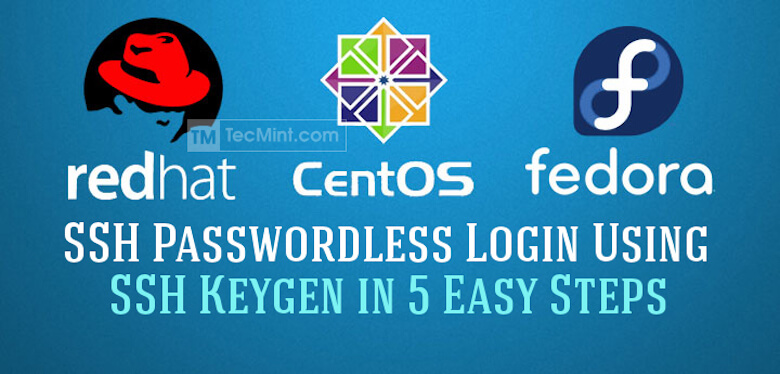SSH Passwordless Login Using SSH Keygen in 5 Easy Steps
| 첨부 '1' |
|
|---|

SSH (Secure SHELL) is an open source and most trusted network protocol that is used to login into remote servers for execution of commands and programs. It is also used to transfer files from one computer to another computer over the network using secure copy (SCP) Protocol.
In this article we will show you how to setup password-less login on RHEL/CentOS 7.x/6.x/5.x and Fedora using ssh keys to connect to remote Linux servers without entering password. Using Password-less login with SSH keys will increase the trust between two Linux servers for easy file synchronization or transfer.
My Setup Environment
If you are dealing with number of Linux remote servers, then SSH Password-less login is one of the best way to automate tasks such as automatic backups with scripts, synchronization files using scp and remote command execution.
In this example we will setup SSH password-less automatic login from server 192.168.0.7 as user picomax to 192.168.1.240 with user hooni.
Step 1: Create Authentication SSH-Kegen Keys on – (192.168.0.7)
First login into server 192.168.0.7 with user picomax and generate a pair of public keys using following command.
Step 2: Create .ssh Directory on – 192.168.1.240
Use SSH from server 192.168.0.7 to connect server 192.168.1.240 using hooni as user and create .ssh directory under it, using following command.
Step 3: Upload Generated Public Keys to – 192.168.1.240
Use SSH from server 192.168.0.7 and upload new generated public key (id_rsa.pub) on server 192.168.1.240 under hooni‘s .ssh directory as a file name authorized_keys.
Step 4: Set Permissions on – 192.168.1.240
Due to different SSH versions on servers, we need to set permissions on .ssh directory and authorized_keys file.
Step 5: Login from 192.168.0.7 to 192.168.1.240 Server without Password
From now onwards you can log into 192.168.1.240 as hooni user from server 192.168.0.7 as picomax user without password.
[출처] https://www.tecmint.com/ssh-passwordless-login-using-ssh-keygen-in-5-easy-steps/
-
Read More
[ajax] 샘플 코드와 한글처리에 대한 간단한 설명
-
Read More
ZBar 라이브러리를 이용한 바코드 스캔 앱 개발하기
-
Read More
XML, JSON, BSON, MSGPACK 장,단점 비교
-
Read More
XE Core 1.8.18 본문 작성시 태그(html) 사라지는 버그
-
Read More
WM미통기 - 10. 조건부확률
-
Read More
What is difference between Get, Post, Put and Delete?
-
Read More
URI 인코딩, URL 인코딩
-
Read More
SVN(Subversion) 설치와 설정 (sasl 인증 적용 포함)
-
Read More
SVN 초간단 사용하기
-
Read More
SVN 명령어 (SVN command)
-
Read More
SSH Passwordless Login Using SSH Keygen in 5 Easy Steps
-
Read More
SQL JOIN 정리 (Inner Join & Outer Join)
 SQL JOIN 정리 (Inner Join & Outer Join)
SQL JOIN 정리 (Inner Join & Outer Join)